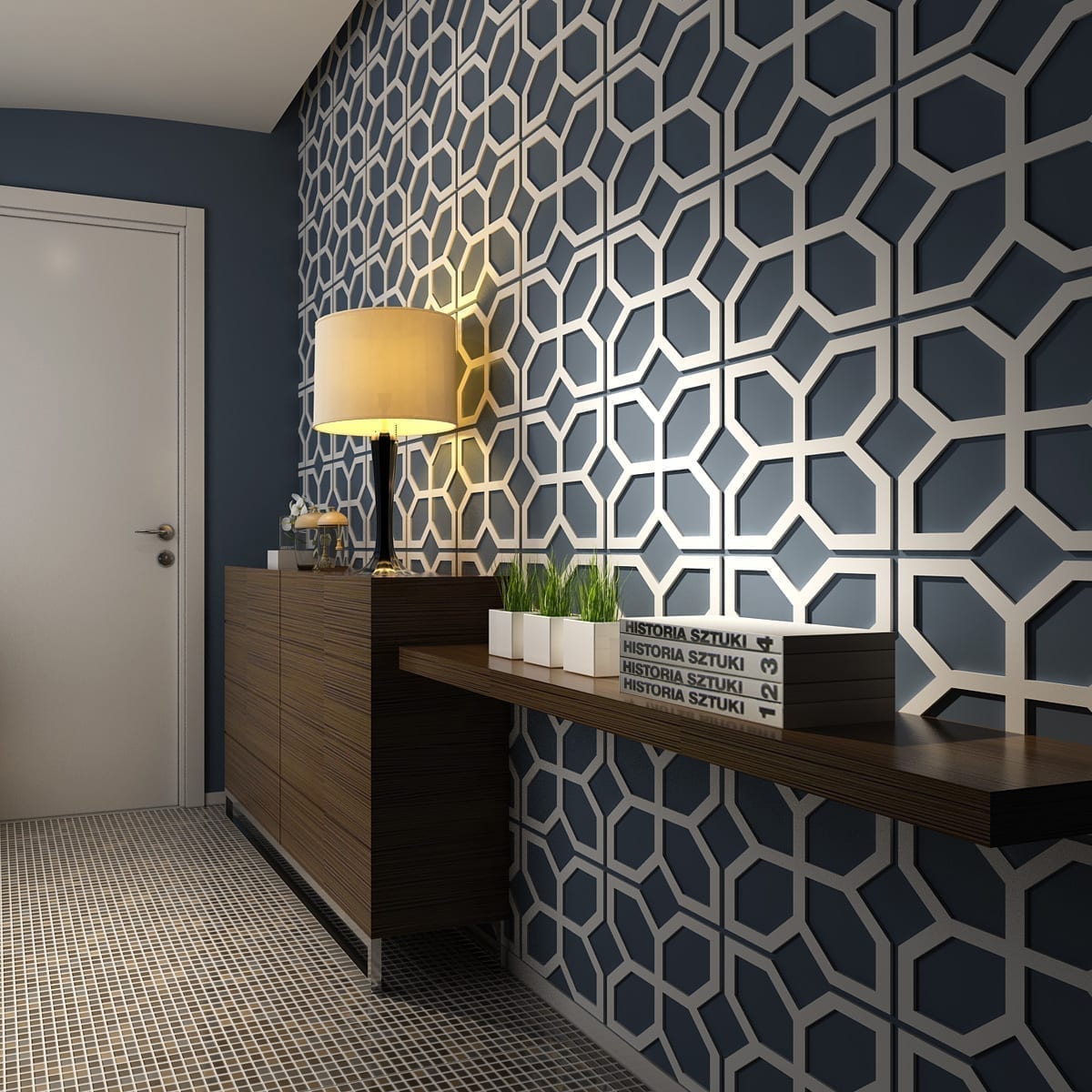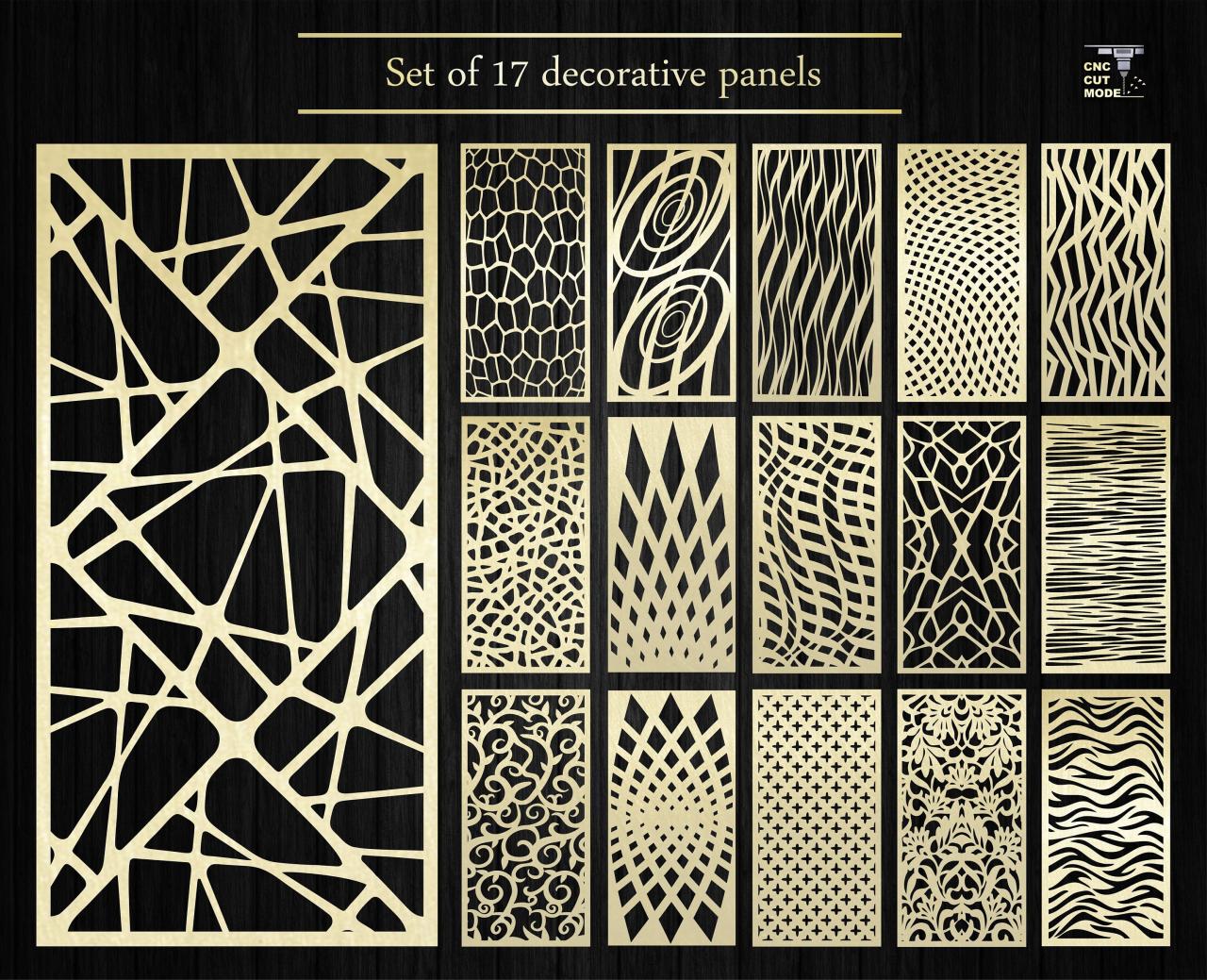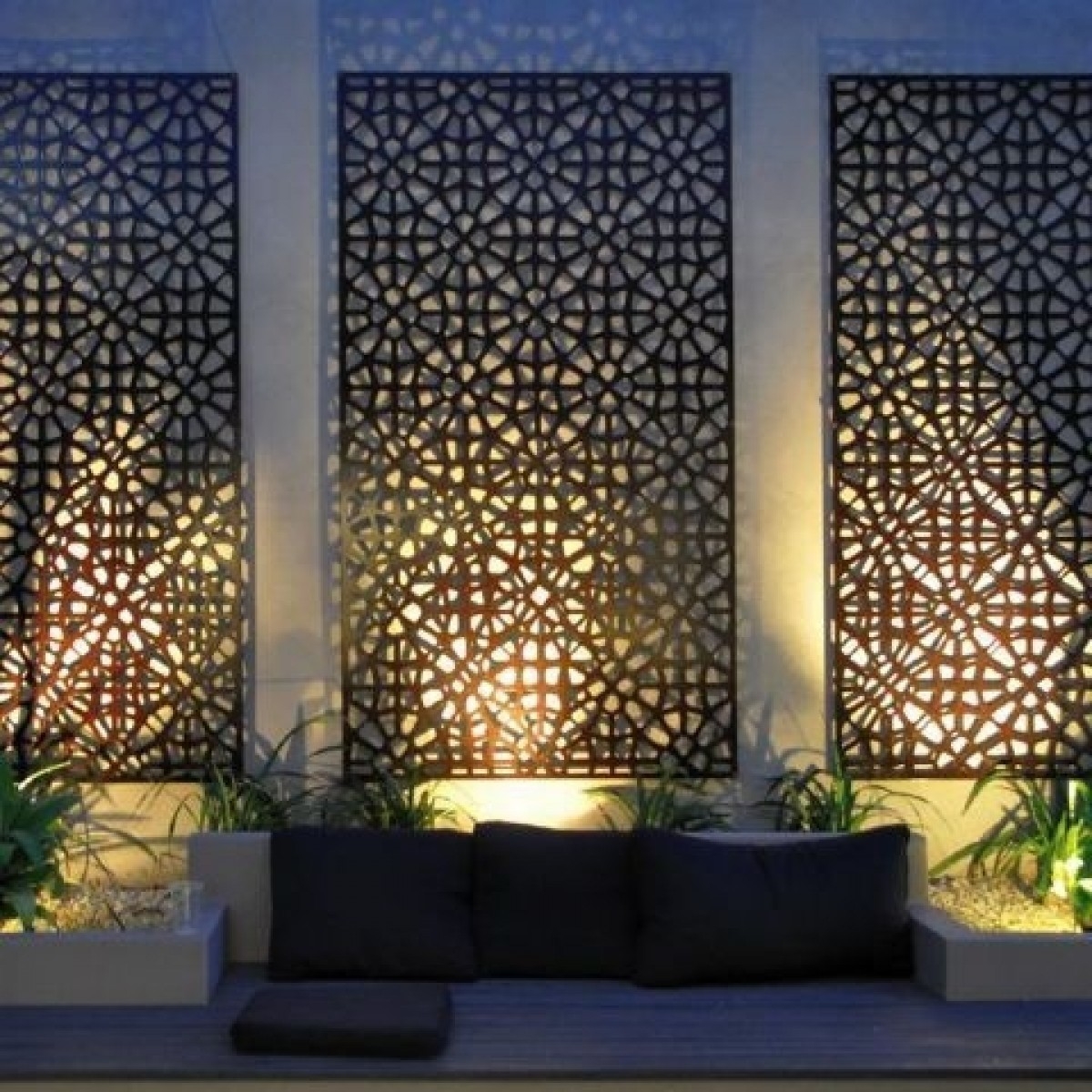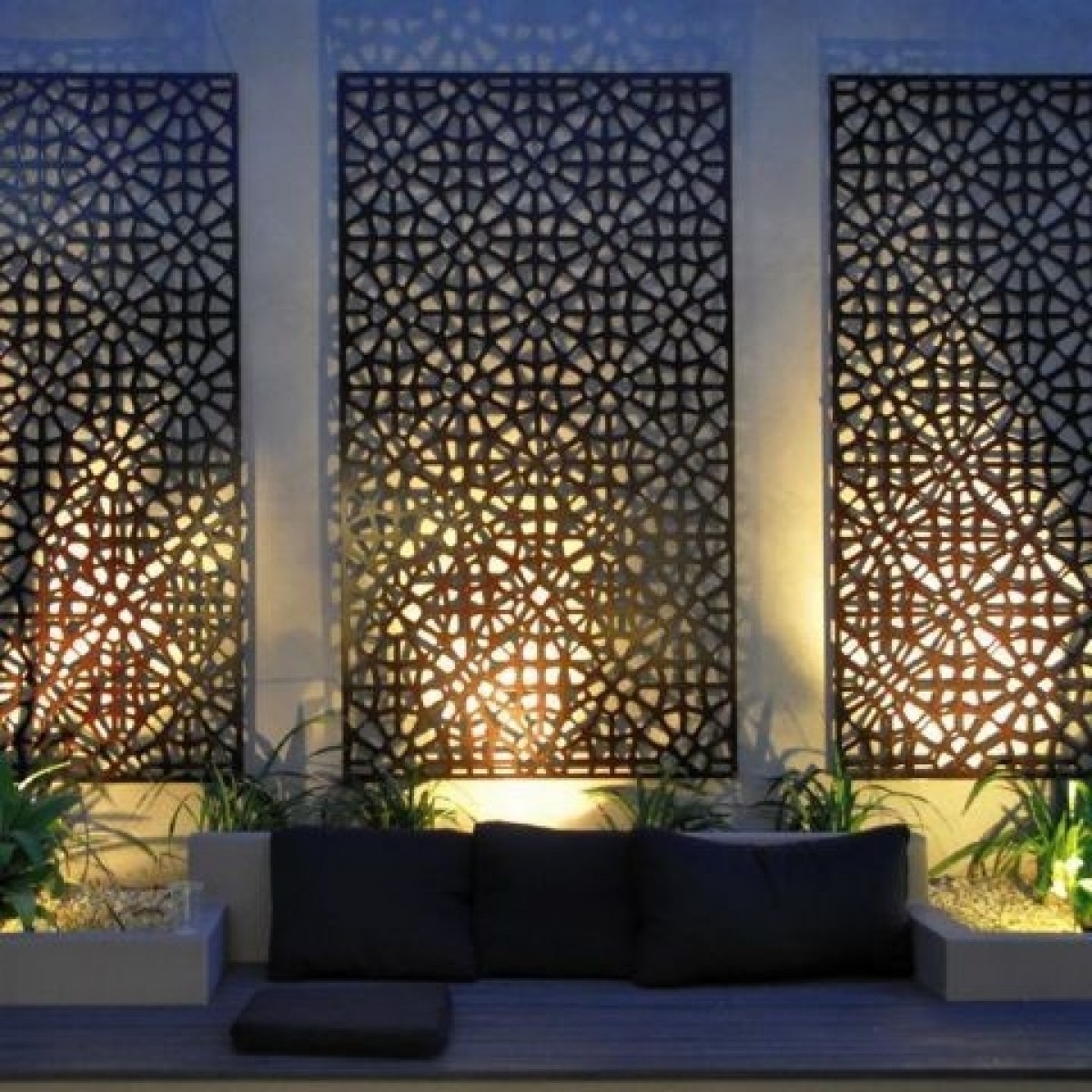Embark on a journey into the world of decorative panels, where aesthetics and functionality intertwine to elevate any space. These versatile elements serve as canvases for creativity, adding depth, texture, and a touch of elegance to walls, ceilings, furniture, and more.
From classic wood panels to contemporary metal and glass creations, decorative panels offer a myriad of options to suit diverse tastes and design styles. Join us as we explore the types, design considerations, applications, and latest trends in this captivating realm.
Definition and Overview

Decorative panels are architectural elements used to enhance the aesthetics of a building or space. They are typically made from various materials, including wood, metal, glass, and plastic, and are often adorned with intricate designs, patterns, or textures.
Decorative panels serve several purposes, such as:
- Aesthetic Enhancement:They add visual interest and enhance the overall appearance of a building’s facade, interior walls, or ceilings.
- Privacy and Partitioning:They can be used to create partitions or divide spaces while still allowing light to pass through.
- Acoustic Control:Some decorative panels are designed with sound-absorbing materials to reduce noise levels in a space.
- Ventilation:Perforated decorative panels can allow for ventilation while maintaining privacy.
Types of Decorative Panels

Decorative panels enhance the aesthetic appeal of various spaces, offering a wide range of options to suit different styles and functional needs. These panels come in various materials, each with unique characteristics and applications.
Wood Panels
Wood panels are a classic choice for decorative applications, exuding warmth and natural beauty. They can be crafted from various wood species, each offering distinct grain patterns, textures, and colors. Wood panels are versatile and can be used for wall cladding, ceiling treatments, furniture accents, and more.
Metal Panels
Metal panels introduce a touch of industrial elegance to spaces. They are available in a range of finishes, including brushed, polished, and textured, and can be fabricated from materials such as aluminum, stainless steel, and copper. Metal panels are durable, resistant to wear and tear, and can create striking visual effects.
Fabric Panels
Fabric panels bring a soft and inviting touch to interiors. They are available in a vast array of fabrics, including velvet, linen, silk, and leather. Fabric panels can be used for wall coverings, window treatments, and room dividers, adding warmth, texture, and sound absorption.
Glass Panels
Glass panels offer a sophisticated and light-filled touch to spaces. They can be clear, frosted, or tinted, and can be used for wall cladding, partitions, and tabletops. Glass panels allow light to penetrate, creating a sense of spaciousness and visual interest.
Design Considerations

Choosing the right decorative panels involves considering several factors that influence their aesthetic appeal, functionality, and overall impact on the space. These include:
Style and Aesthetics
The style and aesthetics of the decorative panels should complement the existing décor and architectural features of the space. Consider the overall theme, color scheme, and textures to create a cohesive and harmonious design. Decorative panels can range from traditional to contemporary styles, with various patterns, motifs, and finishes to match different tastes and preferences.
Size and Shape
The size and shape of the decorative panels play a crucial role in determining their visual impact and functionality. Consider the available space, the intended location, and the desired level of prominence. Larger panels make a bolder statement, while smaller ones can add subtle accents or fill in specific areas.
The shape of the panels can also influence their overall aesthetic, with rectangular, square, circular, and even custom shapes available to suit different design concepts.
Materials and Finishes
The choice of materials and finishes for decorative panels affects their durability, aesthetics, and maintenance requirements. Common materials include wood, metal, glass, plastic, and composites. Each material offers unique characteristics in terms of texture, color, and durability. Finishes can range from natural to painted, distressed to polished, providing further customization options to match the desired look and feel.
Installation and Maintenance: Decorative Panel
Installing and maintaining decorative panels is relatively simple, ensuring their longevity and aesthetic appeal. Here’s a comprehensive guide to help you navigate the process:
Installation
The installation process involves attaching the panels to a surface using appropriate fasteners, such as screws, nails, or adhesives. It’s essential to consider the material of the panels and the surface they will be mounted on. Proper alignment and spacing are crucial to achieve a seamless and visually pleasing result.
Maintenance
Maintaining decorative panels is essential to preserve their appearance and functionality. Regular cleaning with a soft cloth and mild detergent is recommended to remove dust and dirt. Avoid using harsh chemicals or abrasive materials, as they can damage the surface.
If necessary, consult the manufacturer’s instructions for specific cleaning recommendations based on the panel’s material and finish.
Trends and Innovations
The world of decorative panels is constantly evolving, with new materials, technologies, and styles emerging all the time. These innovations are driven by the desire for more sustainable, versatile, and aesthetically pleasing options.
One of the most significant trends in decorative panel design is the use of sustainable materials. Recycled glass, wood, and metal are increasingly being used to create panels that are both beautiful and environmentally friendly.
New Materials, Decorative panel
- Recycled glass: Recycled glass is a versatile material that can be used to create panels in a wide variety of colors and textures.
- Reclaimed wood: Reclaimed wood is another sustainable option that can add a rustic touch to any space.
- Metal: Metal panels are durable and easy to maintain, making them a good choice for high-traffic areas.
Innovative Technologies
New technologies are also being used to create decorative panels that are more versatile and easier to install.
- Digital printing: Digital printing allows for the creation of custom panels with any design imaginable.
- 3D printing: 3D printing can be used to create panels with complex shapes and textures.
- Laser cutting: Laser cutting can be used to create precise cuts and patterns in panels.
New Styles
In terms of style, there is a growing trend towards more contemporary and minimalist designs. Panels with clean lines and simple patterns are becoming increasingly popular.
- Geometric patterns: Geometric patterns are a popular choice for contemporary panels.
- Abstract designs: Abstract designs can add a touch of whimsy to any space.
- Natural textures: Natural textures, such as wood grain and stone, are also becoming increasingly popular.
Summary
In conclusion, decorative panels have emerged as a powerful design tool, transforming ordinary spaces into extraordinary ones. Their versatility, aesthetic appeal, and functional benefits make them a must-consider for architects, interior designers, and homeowners alike. As technology and innovation continue to push boundaries, we eagerly anticipate the future of decorative panel design, where imagination and creativity will undoubtedly soar to new heights.
Helpful Answers
What are the most popular materials used for decorative panels?
Wood, metal, fabric, and glass are among the most commonly used materials for decorative panels.
How can I choose the right decorative panel for my space?
Consider factors such as style, size, shape, materials, finishes, and the overall design aesthetic of your space.
Are decorative panels easy to install?
The installation process for decorative panels varies depending on the type of panel and the surface it is being applied to. However, most panels are designed for ease of installation.

